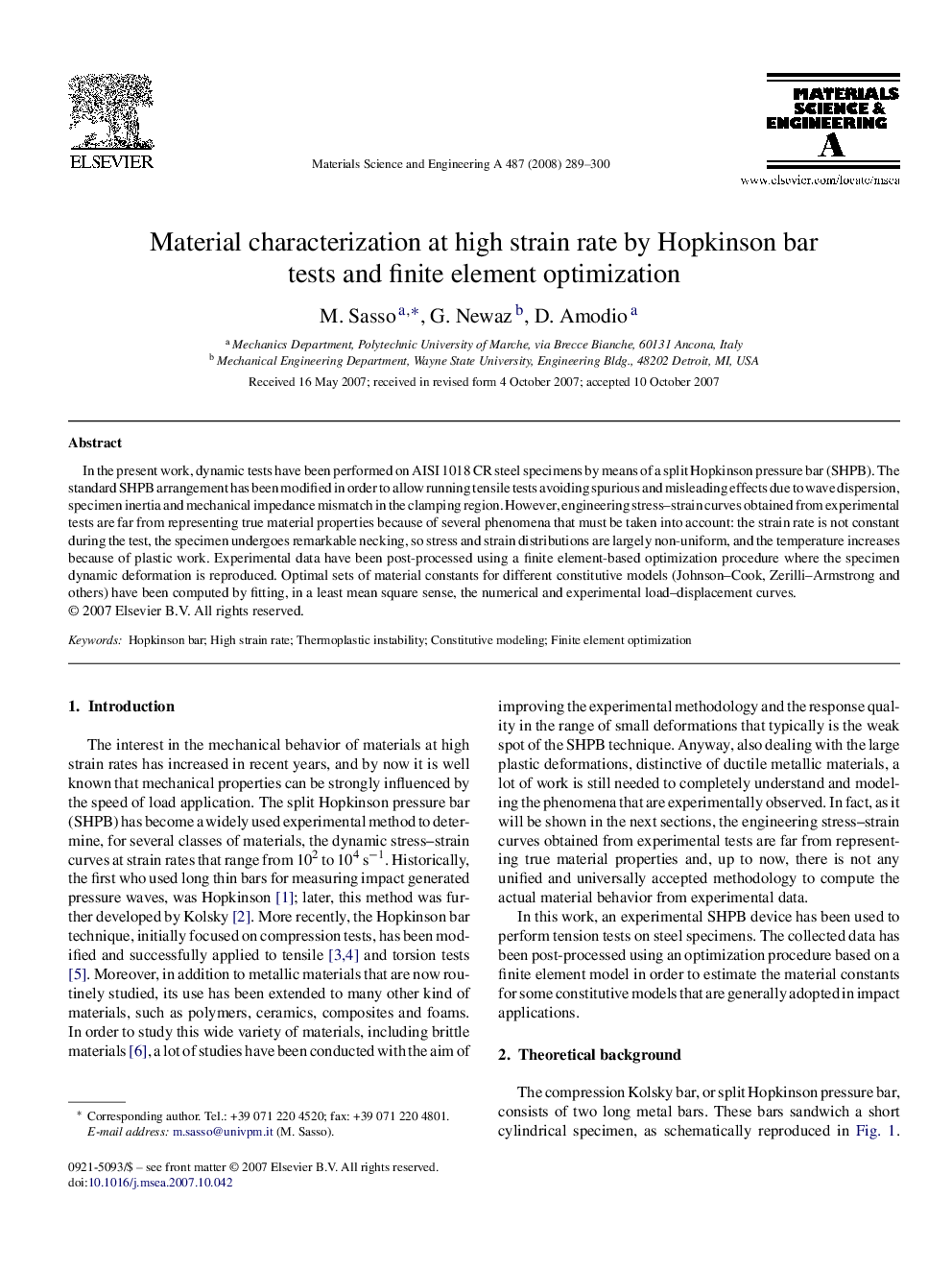| Article ID | Journal | Published Year | Pages | File Type |
|---|---|---|---|---|
| 1582572 | Materials Science and Engineering: A | 2008 | 12 Pages |
In the present work, dynamic tests have been performed on AISI 1018 CR steel specimens by means of a split Hopkinson pressure bar (SHPB). The standard SHPB arrangement has been modified in order to allow running tensile tests avoiding spurious and misleading effects due to wave dispersion, specimen inertia and mechanical impedance mismatch in the clamping region. However, engineering stress–strain curves obtained from experimental tests are far from representing true material properties because of several phenomena that must be taken into account: the strain rate is not constant during the test, the specimen undergoes remarkable necking, so stress and strain distributions are largely non-uniform, and the temperature increases because of plastic work. Experimental data have been post-processed using a finite element-based optimization procedure where the specimen dynamic deformation is reproduced. Optimal sets of material constants for different constitutive models (Johnson–Cook, Zerilli–Armstrong and others) have been computed by fitting, in a least mean square sense, the numerical and experimental load–displacement curves.
